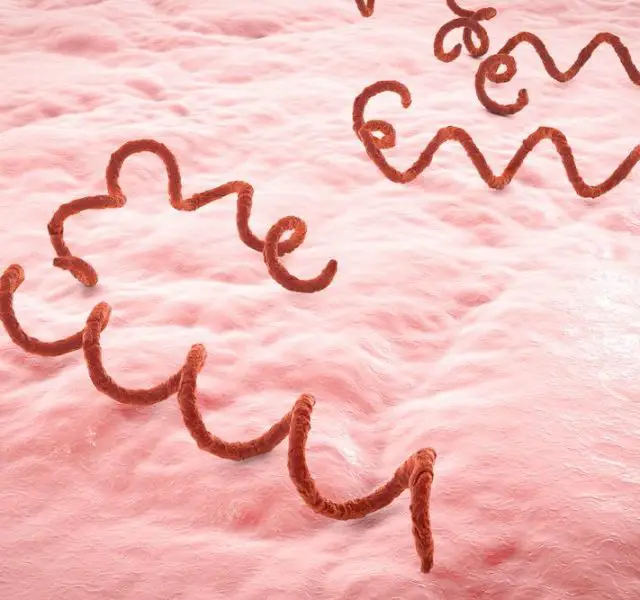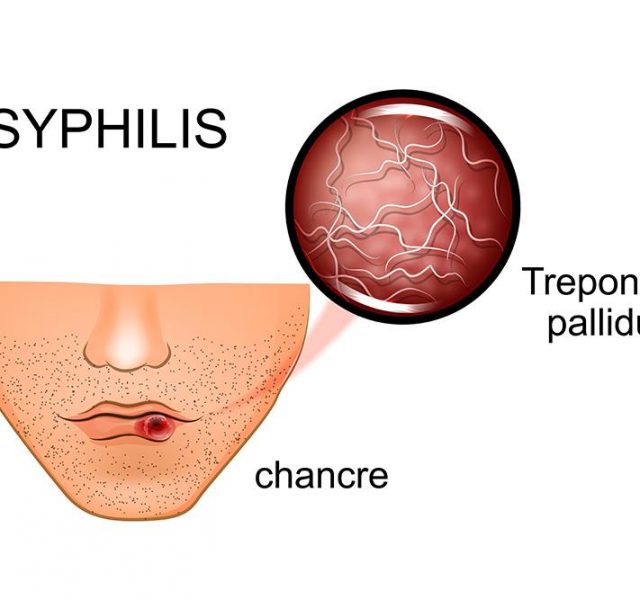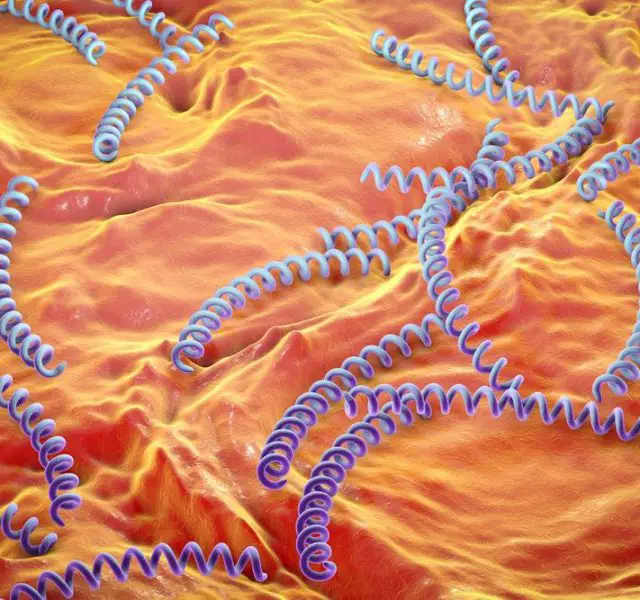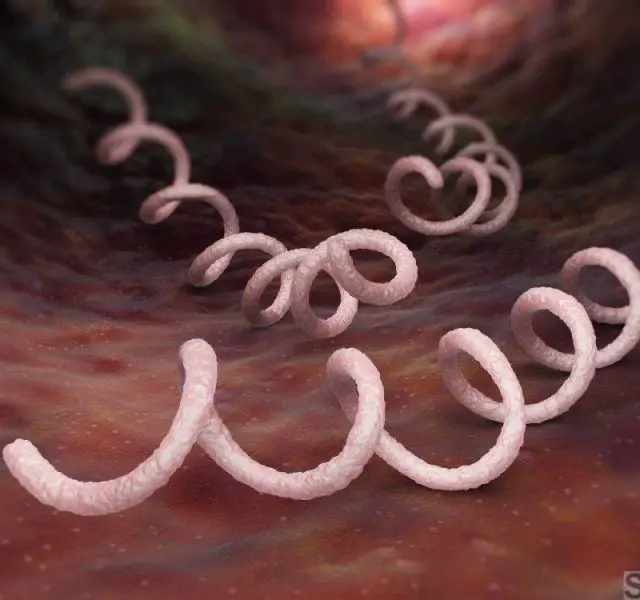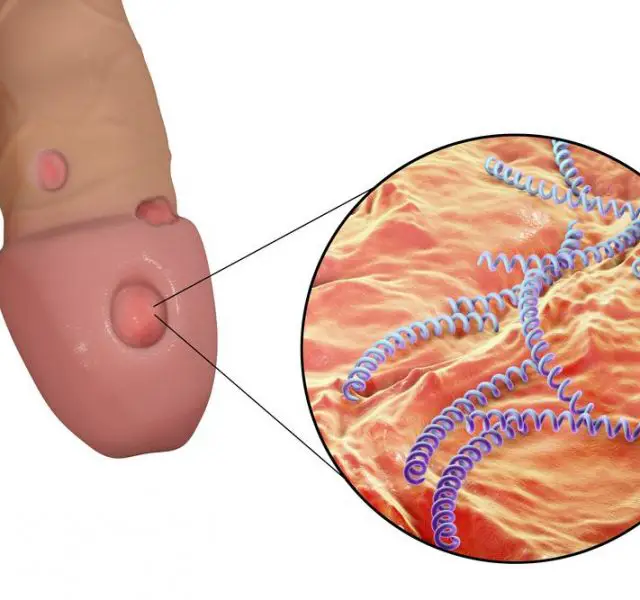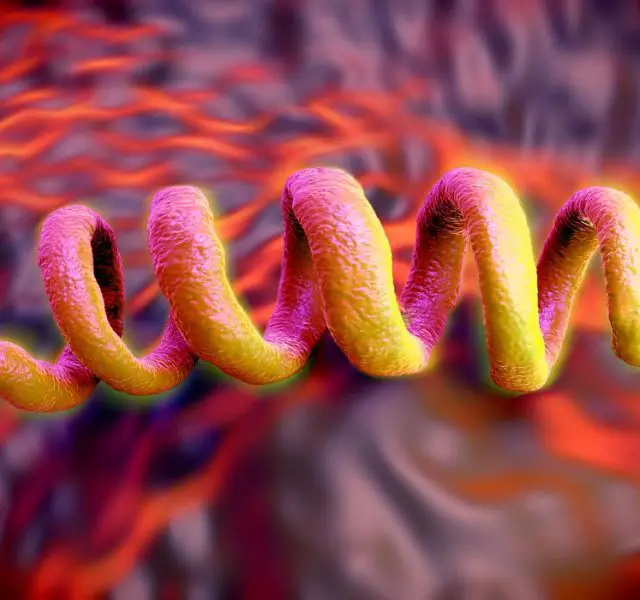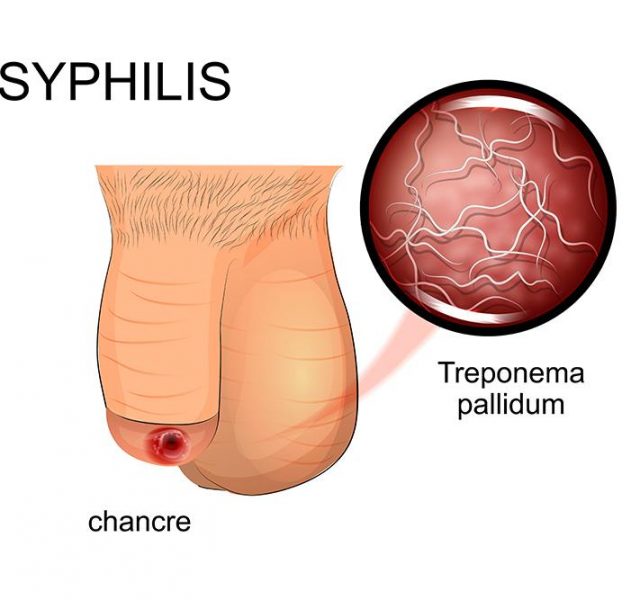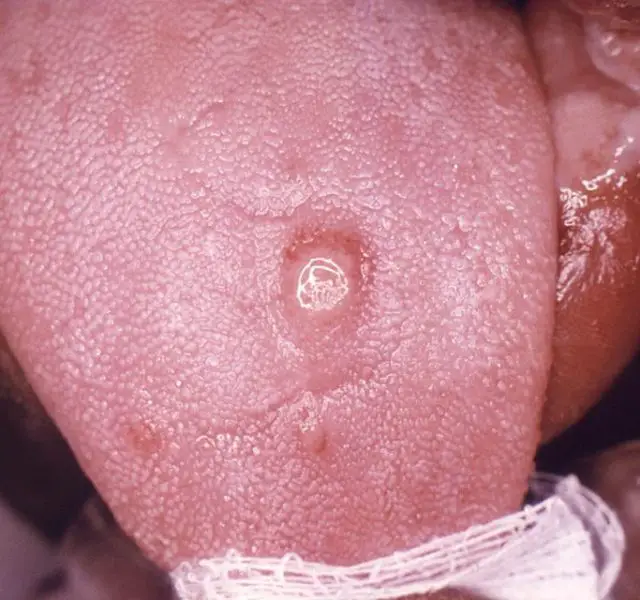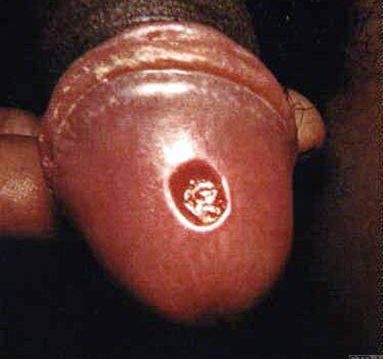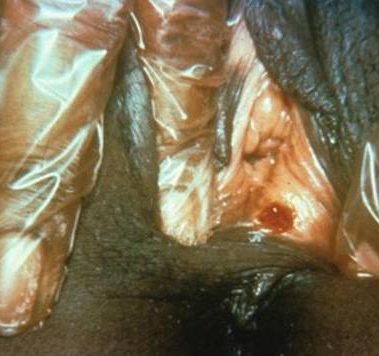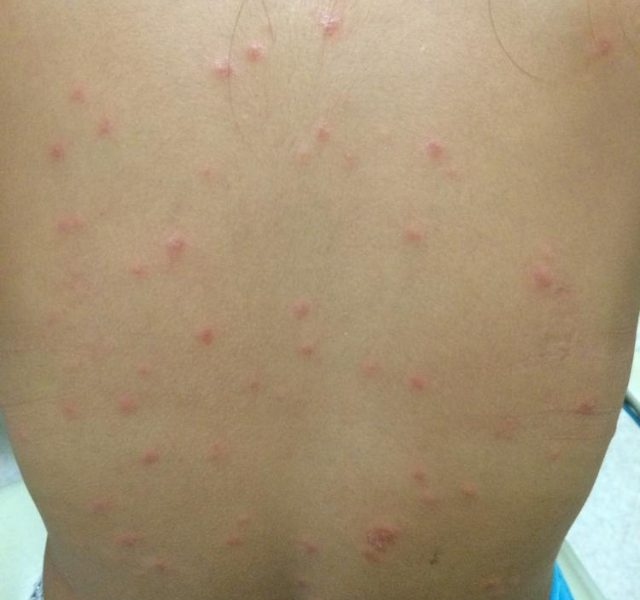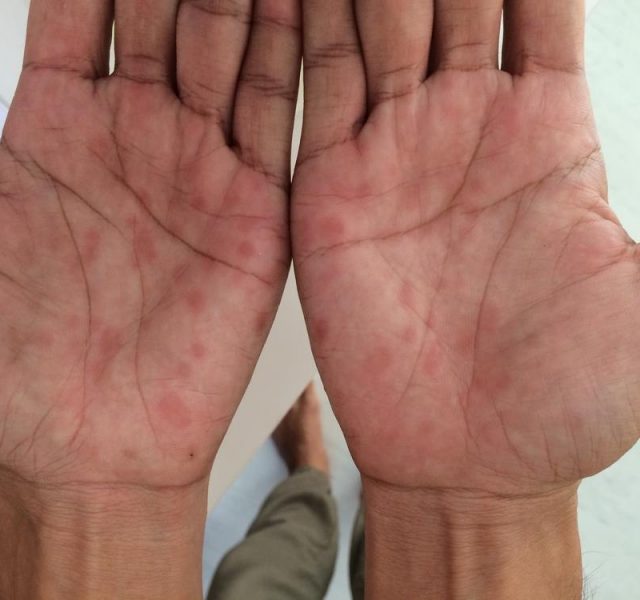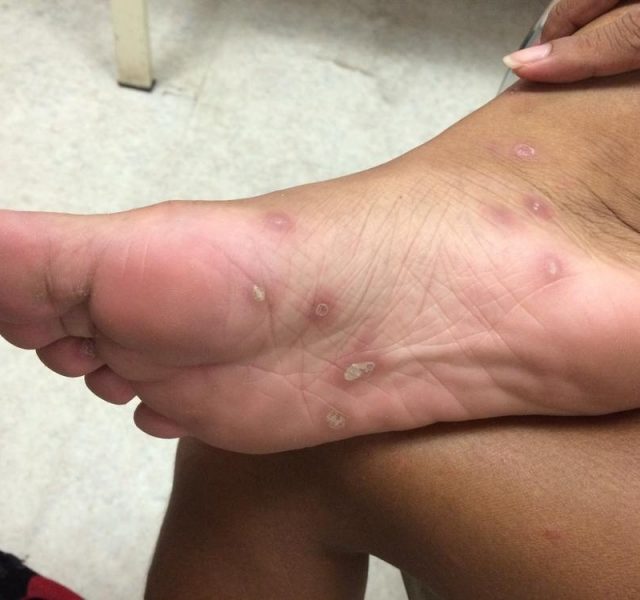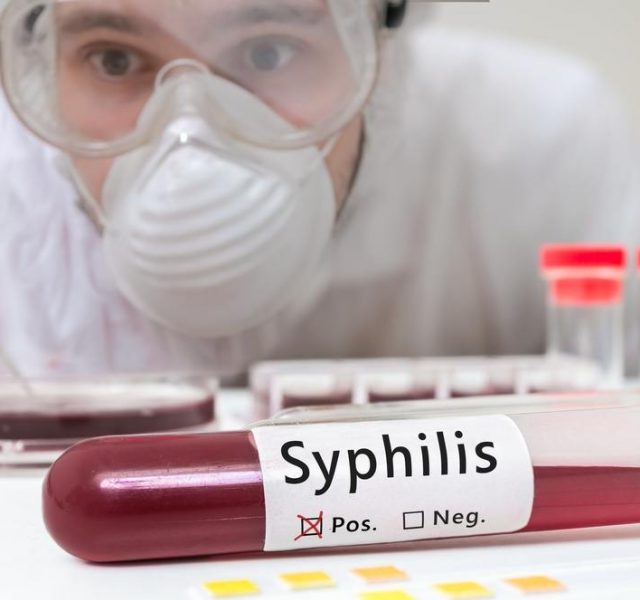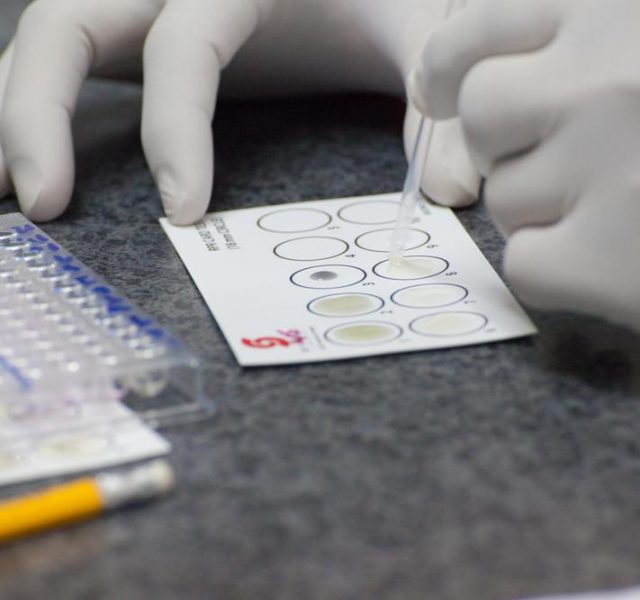Syphilis
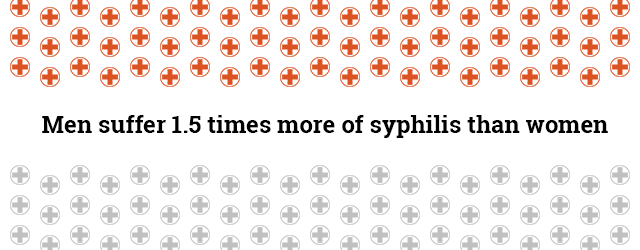
Contents
What is Syphilis?
A bacterial infection caused by an organism called spirochete.Syphilis belongs to a group of infections which are transmitted sexually. The first stage of infection development involves genitals’ sores, which are not accompanied by any painful feelings.
In some cases it can also be transmitted to an unborn child by its pregnant mother. If not treated, infection can develop throughout many years which can lead to rather harmful consequences to other parts of the body. It can have a negative impact on human’s heart and brain.
At the same time syphilis can be treated rather easily and fast without any bad consequences for patient’s health on its early stages. Treatment course may include a dose of antibiotic medication. It is rather important for your partner also to be examined if syphilis was diagnosed.
Syphilis belongs to infection diseases. It is called by a special type of germ called Treponema pallidum. It is actually one of the most common sexually transmitted diseases. The number of infected patients is increasing from year to year. It is highly spread among gays. In addition this infection is rather common in developing countries.
Incubation Period
One week to three months.

A multi-scene engraving shows the treatment of a European syphilis patient, who drinks Guayaco, a medicine made from wood of the Guaiacum tree (being prepared and cooked on right). Ca. 1570.
How is syphilis contracted?
Through oral, anal or vaginal sex, via intimate touching or kissing. Mothers can pass it to their babies by touching syphilis sores (chancres) and then touching the baby.
We have already mentioned the fact that syphilis is a sexually transmitted infection. It can be passed from one partner to another with ulcer. Some people mistakenly think that infection can be obtained via toilet seats, bathtubs, shared clothing and so on. This is a false opinion. Syphilis can be obtained only via direct contact with a person who already has the infection.
There is another important factor which should be considered by pregnant women. Syphilis can be passed to unborn child during pregnancy. It is transmitted through placenta. If infection is observed in fetus, it can result in serious health problems in future.
Infection can be also transmitted via blood. It can be brought to human’s organism with the help of blood receiving transfusion. That is why it is important to proceed with thorough and accurate examination of blood receiving products. Needles sharing between infected patients can also result in syphilis.
Symptoms of Syphilis
Syphilis can be divided into primary and secondary infection. Every stage has particular symptoms and side effects.
Primary syphilis results in ulcer which appears about 2-3 weeks after having sex with infected partner. However, you should also note that it can also appear after 3 months. The incubation period may vary and depend on various factors.
Symptoms of primary syphilis are not as common as on its other stages of development:
- patient has more than 1 ulcer;
- ulcer may be followed by pain;
- ulcer can be found in patient’s mouth after oral sex or in the rectum;
Secondary syphilis may result if primary infection is not treated. Sometimes patients can’t simply notice ulcer that may spread in different parts of the body. That is the main reason for development of secondary syphilis. It usually appears several weeks after patient was infected, sometimes more. Symptoms may vary depending on health conditions and organism of every person individually.
The most common symptoms are the following:
- rash;
- sore throat;
- joint pains;
- loss of patchy hair (less common);
- liver, brain or eyes inflammation;
- feeling of tiredness.
Syphilis Testing
The main problem about syphilis is the fact that it is rather hard to detect. Sometimes primary infection is not followed by any symptoms or side effects. At the same time symptoms may also vary from person to person, health conditions and many other factors which should also be considered.
That is why the best way is to turn to your health care provider and complete several easy tests and examinations. Infection can be easily detected with the help of various laboratory examinations. They include two major tests:
- Doctor may take small sample of swab from a sore. It makes it possible to see typical germs with the help of a microscope.
- If the sore can’t be examined or ulcer is gone, blood tests are necessary. Antibody test will also help to reveal whether you have infection or not. If the test result is negative, it does not mean that you do not have syphilis, it means that the test could be made a bit earlier then needed. On the other hand you should note that positive test result may also mean that you had syphilis infection in the past. Screening is necessary for pregnant women.
Diagnosis of syphilis is done through a blood test and/or examination of secretions from chancres.
Syphilis Treatment – Is there a Cure for it?
Due to the fact that syphilis is caused by germs, treatment involves taking antibiotic drugs. They include various popular medications that have already proved to be quite efficient. Benzathine is widely spread nowadays showing good and efficient results.
The most common treatment includes antibiotic injection which kills bacteria and blocks development of disease. The injection is usually made into buttock. Single dose of antibiotics is more than enough to eliminate all consequences of primary and secondary syphilis infection. If a patient has later stages of infection progress, additional injections and treatment course may be necessary. In such cases Neurosyphilis can also be taken in more frequent dosages to prevent infection progress.
If you are allergic to some medications which contain penicillin, other alternatives are available to treat syphilis. Consult your healthcare provider to determine the best treatment course and follow the instructions.
Antibiotics – Benzathine penicillin G 2.4 mU intramuscular injection or Doxycycline 100 mg by mouth 2-3 times a days for 14 days.
If you are not treated
Untreated syphilis can lead to serious damage to the brain and the nervous system; mental deterioration; loss of balance, vision, and sensation; leg pain; and heart disease. A fetus is at particular risk if the mother doesn’t seek treatment; the chances for stillbirth and serious birth defects, including blindness, are very high.
Further Reading
- Curable and Incurable STDs
- STD Symptoms
- STD Treatment
- Gonorrhea Symptoms. Treatment
- Chlamydia Infection

